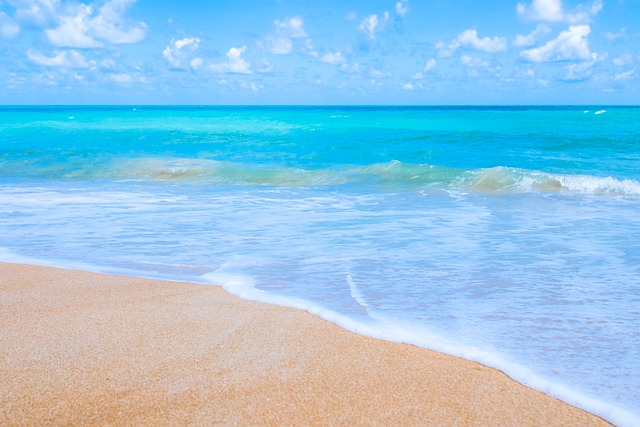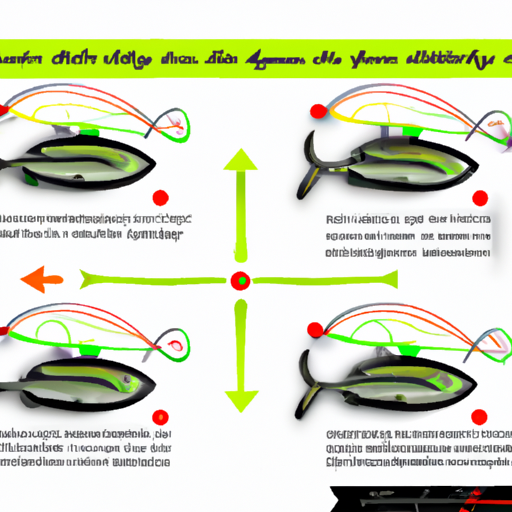Have you ever been fishing and wondered what type of fishing line is best for different fishing situations? It can be overwhelming when you walk into a store and see shelves filled with different types and colors of fishing lines. But fear not, because in this article, I’m going to guide you through the process of choosing the best fishing line for any fishing situation.
Before we dive into the specifics, let’s first understand why choosing the right fishing line is important. The fishing line is what connects you to the fish, so it plays a crucial role in your fishing success. Different fishing situations require different types of lines, whether you’re fishing in freshwater or saltwater, targeting small fish or big game. In this article, I will discuss the different types of fishing lines available and their pros and cons, so you can make an informed decision. So, if you’re ready to learn more about the best fishing line for your next fishing adventure, keep reading! Choosing the right fishing line for different fishing situations can greatly improve your chances of success on the water. With so many options available, it can be overwhelming to know which type of fishing line is best suited for your needs. In this guide, we will explore the different types of fishing lines and their advantages and disadvantages, as well as provide recommendations for specific fishing situations.

This image is property of pixabay.com.
Understanding Fishing Line Types
Monofilament Fishing Line
Monofilament fishing line is a popular choice among anglers due to its versatility and affordability. It is made from a single strand of nylon and is known for its flexibility and ease of use. Monofilament line tends to have high visibility, which can be an advantage when fishing in clear water conditions. However, it is also more prone to stretching, which can reduce sensitivity and affect your hookset.
Braided Fishing Line
Braided fishing line is made from woven fibers, such as Spectra or Dyneema, and is known for its strength and abrasion resistance. It has a small diameter compared to its strength, allowing for longer casts and increased line capacity on the reel. Braided line has low visibility in the water, making it ideal for fishing in clear or heavily pressured waters. However, it is more visible above the water and can be prone to wind knots and tangles.
Fluorocarbon Fishing Line
Fluorocarbon fishing line is made from a synthetic material called polyvinylidene fluoride (PVDF) and is known for its low visibility and sink rate. It is virtually invisible underwater, making it a good choice for fishing in clear water or when targeting finicky fish. Fluorocarbon line also has a higher density than water, allowing it to sink faster, which is beneficial when fishing at deeper depths. However, it is more expensive than monofilament or braided lines and can be prone to breaking under heavy loads.
Factors to Consider When Choosing a Fishing Line
When choosing a fishing line, there are several factors to consider to ensure you are selecting the right type for your fishing needs.
Fish Species
Different fish species have different feeding habits and behaviors, which can impact your choice of fishing line. Some species, like trout or bass, may be more line shy and require a low visibility line such as fluorocarbon. Others, like catfish or pike, may require a stronger line to handle their aggressive strikes and powerful runs.
Fishing Techniques
The fishing technique you plan to use can also influence your choice of fishing line. For example, if you are using topwater lures or fishing in heavy cover, a braided line with high strength and abrasion resistance may be a better option. On the other hand, if you are finesse fishing with light tackle, a low visibility fluorocarbon line may be more suitable.
Water Conditions
The clarity and depth of the water can also affect your choice of fishing line. In clear water conditions, where fish may be more easily spooked, a low visibility line like fluorocarbon is preferred. In murky or stained water, a higher visibility line like monofilament may be more effective in attracting fish. Additionally, the depth at which you are fishing can impact your choice of line, as deeper water may require a line with a faster sink rate.
Targeted Depth
If you plan to fish at different depths, it is important to consider the properties of the fishing line that will allow you to effectively reach your desired depth. For example, braided line has a low stretch and high sensitivity, making it ideal for detecting subtle bites when fishing deep. Conversely, monofilament line has more stretch, which can be beneficial when fishing at shallower depths to prevent the fish from breaking off.
Monofilament Fishing Line
Monofilament fishing line offers several advantages and disadvantages that should be taken into consideration when making your decision.
Advantages of Monofilament
One of the main advantages of monofilament line is its versatility. It can be used for a wide range of fishing techniques and fish species. Monofilament line also has good knot strength and is easy to handle, making it a popular choice for beginner anglers. Additionally, it is more forgiving when it comes to shock absorption, making it a good choice for fighting aggressive fish.
Disadvantages of Monofilament
One disadvantage of monofilament line is its high visibility in the water, which can potentially spook fish in clear conditions. It also tends to have more stretch than braided or fluorocarbon lines, which can reduce sensitivity and make it harder to detect subtle bites. Monofilament line also has a shorter lifespan compared to braided or fluorocarbon lines and may need to be replaced more frequently.
Braided Fishing Line
Braided fishing line offers some unique advantages and disadvantages that may make it a better choice for certain fishing situations.
Advantages of Braided Line
One of the biggest advantages of braided line is its high strength-to-diameter ratio. It has a smaller diameter compared to its strength, allowing for longer casts and increased line capacity on the reel. Braided line also has minimal stretch, making it highly sensitive and allowing for better hooksets. It is also more resistant to abrasion, making it a good choice for fishing in heavy cover or around structure.
Disadvantages of Braided Line
One disadvantage of braided line is its high visibility above the water, which can potentially spook fish that are line shy. It is also more prone to wind knots and tangles, especially in windy conditions. Braided line can also be harder to handle and may require the use of a monofilament or fluorocarbon leader in certain fishing situations.

This image is property of pixabay.com.
Fluorocarbon Fishing Line
Fluorocarbon fishing line has gained popularity among anglers due to its low visibility and other unique properties.
Advantages of Fluorocarbon Line
One of the main advantages of fluorocarbon line is its low visibility underwater. It is virtually invisible in the water, making it ideal for fishing in clear or heavily pressured waters. Fluorocarbon line also has a higher density than water, allowing it to sink faster and reach deeper depths. It is also more resistant to UV light and has excellent abrasion resistance when compared to monofilament line.
Disadvantages of Fluorocarbon Line
One disadvantage of fluorocarbon line is its higher cost compared to monofilament or braided lines. It also tends to be stiffer and less manageable, making it harder to handle and tie knots with. Fluorocarbon line can also be prone to breaking under heavy loads, so it is important to select the appropriate pound test for your fishing needs.
Best Fishing Line for Freshwater Fishing
The best fishing line for freshwater fishing will depend on several factors, including the fishing technique and targeted fish species.
Top Choices for Freshwater Applications
For general freshwater fishing, a monofilament line with a medium-pound test (between 8-12 lb) is a good all-around choice. It offers versatility, good knot strength, and is suitable for a wide range of fish species and fishing techniques. However, if you are targeting larger fish or fishing in heavy cover, a braided line with a higher-pound test may be preferred.
Recommended Pound Test for Different Fish Species
When targeting specific freshwater fish species, it is important to consider the average size and fighting capabilities of the fish. For smaller fish like trout or panfish, a light-pound test line (around 4-6 lb) is typically sufficient. For larger fish like bass or pike, a medium-pound test line (between 8-12 lb) is recommended. When targeting trophy-sized fish or fishing in heavy cover, a heavy-pound test line (above 15 lb) may be necessary to handle their strength and power.

This image is property of pixabay.com.
Best Fishing Line for Saltwater Fishing
Saltwater fishing can present different challenges and requirements compared to freshwater fishing, so it is important to choose a fishing line that can withstand the harsh marine environment.
Top Choices for Saltwater Applications
For most saltwater fishing situations, a braided line with a high-pound test (20 lb or above) is a popular choice. Saltwater fish species tend to be larger and more powerful than their freshwater counterparts, so a stronger line is necessary to handle their strength. Braided line also offers excellent abrasion resistance, which is important when fishing around reefs, rocks, or other structure. However, if you are fishing in clear or shallow water conditions, a fluorocarbon leader may be necessary to prevent spooking fish.
Recommended Pound Test for Different Saltwater Species
The recommended pound test for saltwater fishing will vary depending on the targeted species and fishing location. For smaller species like flounder or redfish, a medium-pound test line (around 10-15 lb) is typically sufficient. For larger species like tarpon or tuna, a heavy-pound test line (30 lb and above) is recommended to handle their power and size. It is also important to consider the fishing location and conditions, as fishing in offshore or rough water may require even stronger lines.
Choosing the Right Pound Test
Choosing the right pound test for your fishing line is crucial to ensure you have the appropriate strength to handle the fish you are targeting.
Light Pound Test Lines for Smaller Fish
Light-pound test lines (under 10 lb) are suitable for smaller fish species like trout, panfish, or freshwater bass. These lines offer good sensitivity and allow for more finesse fishing techniques. However, they may not be strong enough to handle larger fish or fishing in heavy cover.
Medium Pound Test Lines for Average-Sized Fish
Medium-pound test lines (between 10-20 lb) are versatile and suitable for a wide range of fishing situations. They offer a good balance between sensitivity and strength and can handle average-sized fish species like largemouth bass, walleye, or redfish. These lines are also suitable for fishing in different water conditions and around moderate cover.
Heavy Pound Test Lines for Larger Fish
Heavy-pound test lines (above 20 lb) are necessary when targeting larger fish species or fishing in heavy cover. They offer increased strength and durability, allowing you to handle the power and aggression of species like muskie, pike, or offshore gamefish. These lines can also withstand the abrasion and stress that comes with fishing in and around structure.

Maintaining and Replacing Fishing Line
Proper maintenance and regular inspection of your fishing line is important to ensure optimal performance and prevent breakoffs.
Inspecting and Cleaning Fishing Line
After each fishing trip, take the time to inspect your fishing line for any signs of wear, abrasion, or damage. Look for any frayed sections or weak spots, as these can become potential break points. If you notice any issues, it is best to replace the line rather than risk losing a fish or your tackle. Additionally, cleaning your fishing line with a damp cloth or a line cleaner can help remove debris and prolong its lifespan.
When to Replace Fishing Line
As a general rule, it is recommended to replace your fishing line at least once a year or more frequently if you fish regularly or fish in demanding conditions. Over time, fishing line can become weakened by exposure to UV light, saltwater, or friction from casting and reeling. It is important to have fresh, reliable line to ensure a successful fishing experience.
Conclusion
Choosing the best fishing line for different fishing situations requires careful consideration of various factors including fish species, fishing techniques, water conditions, targeted depth, and pound test requirements. Whether you opt for monofilament, braided, or fluorocarbon line, each has its advantages and disadvantages that should be weighed against your specific fishing needs. By understanding the properties and characteristics of different fishing lines, you can make an informed decision and increase your chances of success on the water. Remember to regularly inspect, clean, and replace your fishing line to ensure optimal performance and enjoyment of your fishing adventures. Happy fishing!

